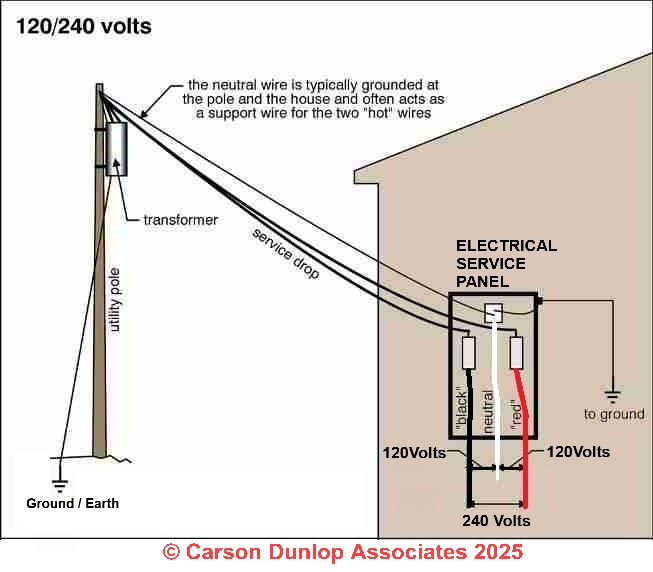Electrical circuits may be connected to ground (earth) for several reasons. The choice of earthing system can affect the safety and electromagnetic compatibility of . As the neutral point of an electrical supply system is often connected to earth ground , ground and neutral are closely related. You see current flows from the panel to the outlet or device to power it up.
The neutral wire is the return path for unused current.

The ground wire is an additional path for electrical current to return safely to .
The terms grounded and grounding are very similar, but their meanings are quite different.

Wiring Description Graphic In any electrical circuit, there are two wires needed to complete any circuit. One is called the hot wire and the other is called neutral or grounded . When the subject of electricity comes up, you will often hear about electrical grounding , or just ground. For example, an electrical generator will say, Be sure to attach to an earth ground before using, or an appliance might warn, Do not use without an appropriate ground. It turns out that the power company uses the Earth . A fundamental aspect of electrical engineering, electrical grounding is the manner in which an electrical circuit is attached to the earth or the ground. If, for example, a hot wire comes loose inside the appliance and touches the metal case, the current will flow thru the ground connection to that case.
If you are having an alteration of addition made to your electrical installation, your electrician must check (as well as other things) that the earthing and bonding arrangements you have are up to the required standard. This is because the safety of any new work you have done (however small) will depend on the earthing and . Humans have made some truly remarkable discoveries in the electrical fiel and one extremely important lesson has been the importance of grounding electrical currents. Electricity has provided countless benefits to people, but it still remains one of the most deadly elements readily available in our daily lives. An effective electrical ground connection also minimizes the susceptibility of equipment to interference, reduces the risk of . A secondary school revision resource for AQA GCSE Additional Science about electricity and mains electricity. The earth ground ensures the safety of an electrical system—the key components are the grounding ro grounding wire, and grounding clamp.
Why is grounding so difficult to understand? One reason is because many do not understand the definition of many important terms. The permanent joining of metal parts together to form an electrically conductive path that has the . You basically perform work on two types of systems: solidly grounded or ungrounded.
The general requirements for grounding and bonding these systems can be summarized as follows. Unfortunately, this is not correct. Unlike birds, people are usually standing on the ground when they contact a “live” wire. Electricity always follows the path of least resistance, and that path could be you whenever an appliance or another electrical component is not grounded.
Proper grounding of your electrical system is essential to your safety. Earthing is more commonly used in Britain, European and most of the commonwealth countries standards (IEC, IS), while .
No comments:
Post a Comment
Note: only a member of this blog may post a comment.